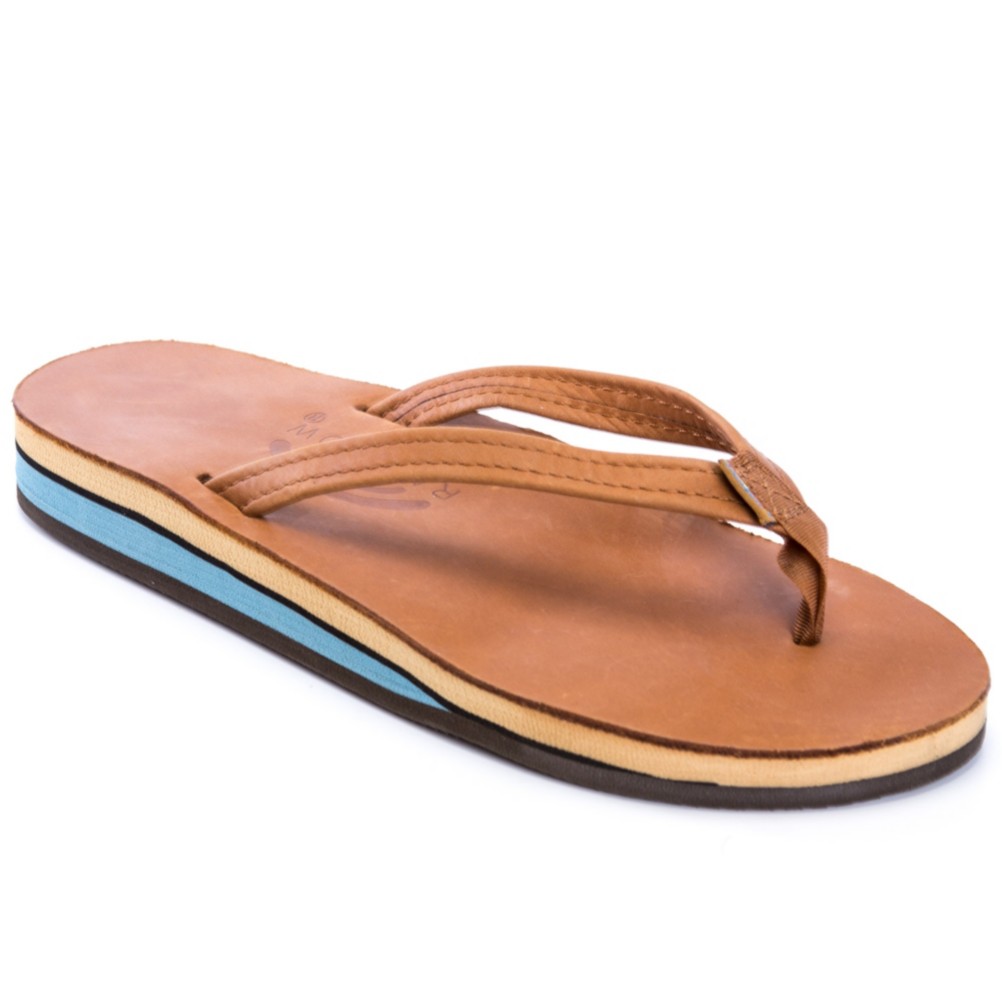

“We’re a functional item that became fashionable because it was built out of functionality,” Longley said. The sole is guaranteed for life, keeping wearers covered for many summers. The product, finished with a memory foam sole and leather strap, can withstand 2,000 pounds of pressure. Retailers include Nordstrom, Dillard’s, PacSun and J.Crew. The high-end flip-flops, which typically run from $36 for a hemp sandal to $51 for a leather model, are now available throughout the U.S., Canada, Europe and Australia. Tourists wanted what the locals wore, and soon beachgoers everywhere were wearing the flip-flop phenom. Longley opened Rainbow Sandals in 1974, and pretty soon surfers spread the word about the comfortable footwear. “It’s the best name ever,” he said with a smile. Today, the shack, with additional rooms, remains the factory and outlet store. He headed south to San Clemente and stumbled on a corrugated metal shack that he could rent for $250 a month. Having earned enough money to make 12 pairs, Longley continued his Hobie consignment operation and began to sell in the Sawdust Art Festival parking lot.īut operators and other paying vendors weren’t happy with the competition, so Longley was kicked out. In 1975, surf-retailer Dick Metz at local Hobie Sports accepted on consignment half a dozen of Longley’s hand-crafted flip-flops.
#Rainbow sandals how to#
In 1972, after his moment of business inspiration, he tinkered with how to craft a well-made sandal that didn’t snap, tear or hurt.

It’s all part of Longley’s commitment to develop a sandal that looks and feels great but won’t wear out. The rest are made in China but are hand-inspected to make sure the quality rivals domestic production. State and federal regulations limit the San Clemente production to 1,000 pairs a day. This is where it happens, where 15% of the brand’s 2 million pairs are made each year. Inside, he brushed past dozens of shadowboxes brimming with soles and handwritten thank-you notes mailed to the store by loyal customers. On a recent, 70-degree morning, Longley - dressed as if he had just waded out of the surf - drove the few miles from his home in south Orange County to his retail outlet showroom, a Tiki-themed building that also serves as the factory headquarters, on Calle de los Molinos in San Clemente. The sandals are now worldwide surfwear icons, though much of the manufacturing and business operations haven’t strayed far from their roots. With no experience making shoes, Longley began doing just that in his Laguna Beach garage in 1972. “I wanted to make something that lasted forever,” Longley said, “so I thought, ‘I’m going to make a sandal.’” What could he make that would be so durable that it didn’t end up in the garbage?īeing a surfer, he knew he wanted a quality flip-flop that didn’t quickly split apart or form blisters on his bare feet like so many cheap pairs. He was mowing lawns for a living and dropping the clippings off at the dump, a process that also piqued his interest in best environmental practices.Īs he thought also about his future, he decided he wanted to create a product that people could rely on for years, if not a lifetime. These were some of the thoughts he had in the 1970s, when he was in his 20s. He sees the vastness of the ocean, the mystery of nature and how easy it can be for people to neglect the care of the planet. When Jay “Sparky” Longley paddles out on his surfboard to catch a wave off the Orange County coast, he doesn’t see only the challenge of the sport that is so much a part of his life.


 0 kommentar(er)
0 kommentar(er)
